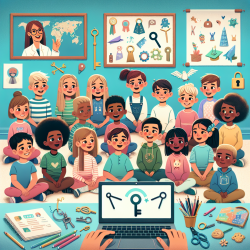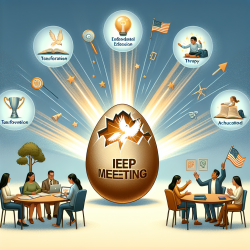Introduction
In the ever-evolving field of healthcare, staying informed about the latest research is crucial for practitioners aiming to provide the best outcomes for their patients. The study titled "Patient knowledge, experiences and preferences regarding retinoblastoma and research: A qualitative study" offers valuable insights that can enhance the practice of those working with retinoblastoma patients. This blog will explore how the findings of this study can be applied to improve patient care and encourage further research engagement.
Understanding Retinoblastoma: A Patient-Centric Approach
Retinoblastoma is a rare form of eye cancer that primarily affects young children. The study conducted by Moses et al. highlights the importance of understanding the experiential knowledge of patients and their families. This knowledge is distinct from the theoretical knowledge held by clinicians and can provide unique insights into patient care.
For practitioners, this means acknowledging the value of patient and family experiences. By incorporating their insights into treatment plans, practitioners can create more personalized and effective care strategies. This patient-centric approach not only improves outcomes but also fosters a stronger therapeutic relationship.
Engaging Patients in Research
The study emphasizes the willingness of retinoblastoma patients and their families to engage in research as partners. However, barriers such as time constraints and the need for appropriate training were identified. For practitioners, this presents an opportunity to involve patients more actively in research projects, potentially leading to innovative solutions and improved care protocols.
Practitioners can facilitate patient engagement by:
- Providing clear and accessible information about ongoing research projects.
- Offering flexible participation options to accommodate patients' schedules.
- Ensuring that patients receive adequate training and support to contribute effectively.
Bridging the Knowledge Gap
One of the key findings of the study is the role of patients as "knowledge brokers," communicating information about retinoblastoma to their social networks. Practitioners can leverage this by empowering patients with accurate and comprehensive information, enabling them to become advocates for their own health and the health of others.
To bridge the knowledge gap, practitioners should:
- Develop educational materials that are easy to understand and share.
- Encourage open dialogue between patients, families, and healthcare providers.
- Utilize digital platforms to disseminate information widely and efficiently.
Conclusion
The findings from the study on retinoblastoma provide valuable insights for practitioners seeking to enhance their practice. By embracing a patient-centric approach, engaging patients in research, and bridging the knowledge gap, practitioners can improve care outcomes and contribute to the advancement of healthcare. For those interested in delving deeper into the research, the original study offers a comprehensive exploration of these themes.
To read the original research paper, please follow this link: Patient knowledge, experiences and preferences regarding retinoblastoma and research: A qualitative study.










